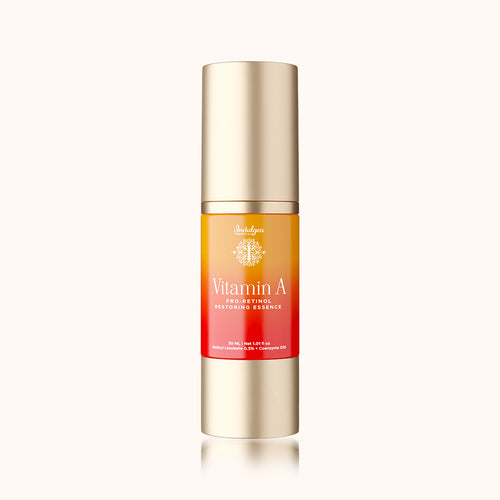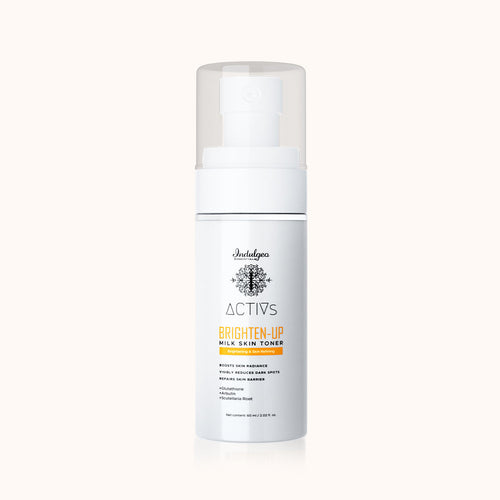
Retinol- ticket to a radiant skin
Share
What To And What Not To Layer With Retinol
Retinol is one of the most recognized ‘active’ skincare ingredients – a top anti-aging solution for your skin. It is a Vitamin A derivative that is especially known for its ability to work wonders for the skin. And to make your skincare routine as effective as possible—not to mention get the most bang for your buck from the products you’re using—knowing which ingredients play nicely together can be helpful.
Using retinol with other ingredients
If you have been wondering or considering the possibilities of using other skincare ingredients along with your retinol, you have found the right guide.
Read ahead to find out if you can use retinol with your other favorite skincare ingredient(s), and also how to use them together.
What all Ingredients can you pair with Retinol?
You can combine it with other skincare components or use it as a standalone ingredient. The secret to achieve your desired glow may lie in combining retinol with other skincare products.
However, you must be sure that the ingredients can function together for the betterment of your skin before you start incorporating several skincare products in your routine.
How to Use Vitamin C and Retinol
It’s crucial to learn how to layer these two active ingredients since if applied improperly, they might irritate your skin and even have negative side effects. You can include retinol in your night-time routine and vitamin C in your morning routine. It is advisable to apply these two ingredients separately on the skin in order to reduce the chance of skin irritation and to give the ingredients more time to act on the skin.
To brighten the skin and shield it from outside aggressors, vitamin C is most effective in the morning. To heal skin damage from the day, retinol works best on the skin at night.
How to do it:
Vitamin C (morning)
- Cleanse your face with a gentle facial cleanser that works for your skin type, and apply your facial toner.
- Apply vitamin C to your skin.
- Allow your skin to absorb it properly for about 2 minutes and apply SPF.
Retinol (night)
- Once you are done with cleansing and your face is completely dry, apply a gel or water based moisturizer.
- After moisturizing, layer your skin with retinol.
- Allow your skin to absorb it completely, then finish up the process by applying a heavy moisturizer or face oil to lock all the goodness of ingredients.
This is also known as Sandwich Technique.
Using Retinol With Hyaluronic Acid!
Yes, you can combine retinol and hyaluronic acid in your skincare regimen. The primary moisturizing characteristics of hyaluronic acid aid in hydrating the skin. There are no negative consequences from combining retinol and hyaluronic acid in your skincare regimen.
These two ingredients are a wonderful combination, as hyaluronic acid helps to reduce the chances of getting irritation from using retinol on your skin.
How to Use Hyaluronic Acid and Retinol
When combining your retinol with a moisturizing agent such as hyaluronic acid, it is best to use your hyaluronic acid first followed by retinol.
How to do it:
- Before you start with the application process, cleanse your face with a gentle cleanser that works for your skin.
- Rinse your face with water
- On your damp skin, massage hyaluronic acid and allow it to sit on your skin for about 5 minutes.
- Allow your face to absorb it till it is completely dry, then you can apply your retinol to moisturize your skin.
Using Retinol and Niacinamide Together!
Yes, you can safely use both ingredients on your skin. Niacinamide is a skincare ingredient that is very gentle on the skin. Retinol helps to eliminate aging signs, discoloration, and other skin blemishes.
These two ingredients have similar functions, however, retinol is stronger than niacinamide. Using these two ingredients will cause no harm at all. Unlike retinol, niacinamide does not cause irritation or dry the skin. When you use niacinamide with retinol, it will help to reduce or prevent the drying effect and other side effects of retinol.
To use the ingredients on your skin, you can get a product that contains both ingredients, or you can use them separately.
How to do it:
- After cleansing and toning, wipe your face with a towel.
- Apply niacinamide on your skin and allow it to absorb.
- Proceed to apply retinol gently on the skin.
You can also use a product that contains the two ingredients, this is the easiest way to use and enjoy the benefits of both ingredients. To use the product, follow usage/application instructions mentioned on the packaging. Ensure that you adhere strictly to the instructions.
Using Retinol and Benzoyl Peroxide Together!
It is advised to employ them separately, in various regimens. The skin would not benefit from using the two substances together because they cancel each other out. They lose their ability to operate on the skin as a result. The skin may get too irritated as a result of this.
However, depending on your skin type, you can use a benzoyl peroxide cleanser in the morning and apply a low concentration retinol product at night. If your skin is sensitive, this may still irritate your skin.
Try this out if your skin doesn’t react harshly to using any of the ingredients independently. This combination might help you to treat acne and aging at the same time. However, it is best to contact a dermatologist or esthetician for help on how to safely use both.
Using BHA and Retinol Together!
Combining acids and retinol in the same routine can create a mess on your skin, as retinoids and acids don’t work well together. However, you can use them separately in your routine.
The risk of side effects can be avoided and skin improvements can be enhanced by using them properly. Apply the ingredients at different times in a day so that your skin has a chance to adjust its pH levels in between applications. To remove dead skin cells and promote brighter skin, you might use BHA in the morning. Retinol should only be applied at night because it makes the skin more sensitive to the sun.
















